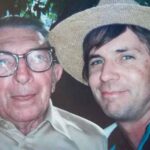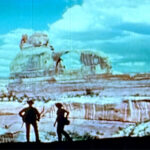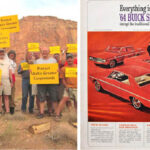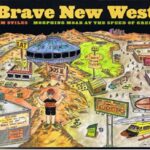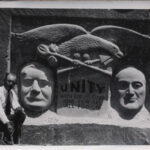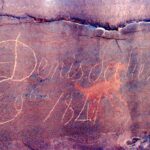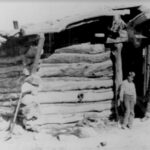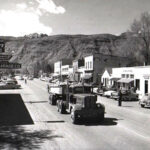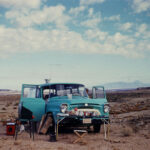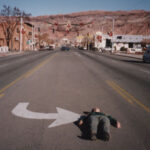
One morning in December 1989, I went downtown to check out the Christmas decorations. After a fairly chaotic tourist season, which had started last March and wound down in mid-October. now Main Street was dead. Many businesses had put up signs that read “Closed For The Winter.” There wasn’t enough tourist traffic during the winter months to sustain the number of new businesses that had opened in the last couple of years.
I saw fellow Moab resident Lucy Wallingford appreciating the relative quiet and especially how empty Main Street was. To emphasize the point, I asked Lucy if she would lie down in the middle of the turning lane. Lucy quickly assumed a location at the pointy end of the arrow. (I should note that this was a staged photograph. Lucy was not lying there before I arrived.)
This is perfect, I thought. “The Way Life Should Be.”

